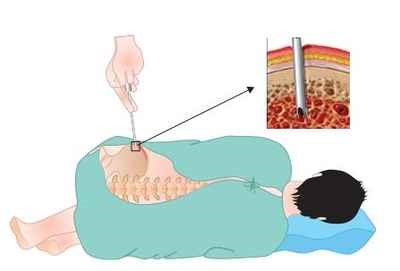There are different treatments available for Multiple Myeloma depending on the stage of Multiple Myeloma. Factors other than the stage of cancer that might have an impact on your treatment decision include your age, your overall health, and your own preferences. The three main types of treatment include:
Watchful Waiting
People with smoldering myeloma may be able to put off having cancer treatment. By delaying treatment, you can avoid the side effects of treatment until you have symptoms.
If you and your Doctor agree that watchful waiting is a good idea, you may have regular checkups (such as every 3 months) and receive treatment if symptoms occur.
Although watchful waiting avoids or delays the side effects of cancer treatment, this choice has risks. In some cases, it may reduce the chance to control myeloma before it gets worse.
You may decide against watchful waiting if you don’t want to live with untreated myeloma. If you choose watchful waiting but grow concerned later, you should discuss your feelings with your Doctor.
Induction Therapy
Many different types of drugs are used to treat myeloma. People often receive a combination of drugs, and many different combinations are used to treat myeloma.
Each type of drug kills cancer cells in a different way:
- Chemotherapy: Chemotherapy kills fast-growing myeloma cells, but the drug can also harm normal cells that divide rapidly
- Targeted therapy: Targeted therapies use drugs that block the growth of myeloma cells. The targeted therapy blocks the action of an abnormal protein that stimulates the growth of myeloma cells.
- Steroids: Some steroids have antitumor effects. It is thought that steroids can trigger the death of myeloma cells. A steroid may be used alone or with other drugs to treat myeloma.
You may receive the drugs orally or through a vein (IV). The treatment usually takes place in an outpatient part of the hospital, at the Doctor’s office, or at home. Some people may need to stay in the hospital for treatment.
Stem Cell Transplant
Many people with Multiple Myeloma may get a stem cell transplant. A stem cell transplant allows you to be treated with high doses of drugs. The high doses destroy both myeloma cells and normal blood cells in the bone marrow. After you receive high-dose treatment, you receive healthy stem cells through a vein. New blood cells develop from the transplanted stem cells so they can replace the one that were destroyed by treatment.
Stem cell transplants may take place in the hospital or in the outpatient setting. Patients will be assessed individually for suitability for either setting. Some people with myeloma have two or more transplants.
Stem cells may come from you or from someone who donates their stem cells to you:
- From you: An autologous stem cell transplant uses your own stem cells. Before you get the high-dose chemotherapy, your stem cells are removed. The cells may be treated to kill any myeloma cells present. Your stem cells are frozen and stored. After you receive high-dose chemotherapy, the stored stem cells are thawed and returned to you.
- From a family member or another donor: An allogeneic stem cell transplant uses healthy stem cells from a donor. Your brother, sister, or parent may be the donor. Sometimes the stem cells come from a donor who isn’t related. Doctors use blood tests to be sure the donor’s cells match your cells. Allogeneic stem cell transplants are under study for the study for the treatment of Multiple Myeloma.
There are two ways to get stem cells for people with myeloma. They usually come from the blood (peripheral blood stem cell transplant). Or they can come from the bone marrow (bone marrow transplant).
After a stem cell transplant, you may stay in the hospital for several weeks or months. You’ll be at risk for infections because of the large doses of chemotherapy you received. In time, the transplanted cells will begin to produce healthy blood cells.

























